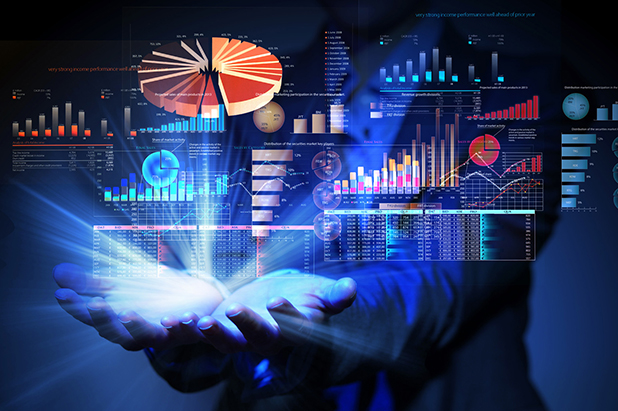
R is a widely-used programming language and environment specifically designed for statistical computing and data visualization. Developed in the early 1990s by Ross Ihaka and Robert Gentleman, R has grown to become a go-to tool for statisticians, data scientists, and researchers across various industries. It’s particularly favored for data analysis and machine learning projects, making it an integral part of the modern data science ecosystem.
As a versatile and powerful tool, R is widely supported by a strong community of contributors and developers who continuously add new libraries, making it relevant for a wide range of applications, from academic research to real-world data science solutions.
Key Features of R Programming
- Statistical Computing: R provides a wide variety of statistical techniques, such as linear and nonlinear modeling, time-series analysis, and classification.
- Data Visualization: R excels at data visualization with libraries like ggplot2, plotly, and shiny, providing advanced visualization options.
- Open Source: As an open-source language, R is freely available and supported by a vast user base that contributes to its growth.
- Extensibility: R can be extended via user-created packages, which allow for specialized functionalities. As of 2024, there are over 18,000 packages available on CRAN (Comprehensive R Archive Network).
- Cross-Platform Compatibility: R runs on a wide range of platforms, including Windows, macOS, and Linux, which enhances its accessibility.
- Integration with Other Technologies: R can easily integrate with other programming languages like C, C++, Python, and SQL, as well as tools like Hadoop and Spark, making it versatile in complex data science solutions.
Usage of R in Data Science Solutions
R has become synonymous with data science services, thanks to its robust capabilities in handling data-driven tasks. As businesses increasingly look to leverage data to make strategic decisions, R is playing a critical role in the development of sophisticated data science solutions, spanning multiple industries:
- Healthcare: R is used in bioinformatics and medical research to analyze patient data, predict outcomes, and optimize treatment plans.
- Finance: Financial institutions utilize R for risk analysis, portfolio management, and forecasting market trends.
- Retail: Retailers leverage R for customer segmentation, demand forecasting, and optimizing inventory management.
- Manufacturing: Data science consultants use R to optimize supply chains, perform predictive maintenance, and enhance production quality.
Pros of Using R
- Comprehensive Data Analysis Capabilities: R is purpose-built for statistics, which makes it the ideal language for rigorous data analysis.
- Rich Visualization Options: R’s libraries (ggplot2, shiny) allow for the creation of aesthetically pleasing and informative visualizations.
- Extensive Library Support: The availability of thousands of packages across diverse domains makes R highly adaptable to new challenges in data science.
- Community Support: R has a strong global community of developers, data science consultants, and users who contribute to its extensive documentation and troubleshooting forums.
- Ideal for Prototyping: Thanks to its powerful data manipulation and visualization tools, R is ideal for quickly prototyping data science models before scaling them up.
Cons of Using R
- Speed: Compared to languages like Python or C++, R can be slower, especially when handling large datasets or computationally intensive tasks.
- Memory Intensive: R stores data in-memory, which can be problematic when working with large datasets.
- Steep Learning Curve: While powerful, R’s syntax can be difficult to grasp for beginners, particularly those without a background in statistics.
- Limited Use Beyond Data Science: While excellent for statistical analysis and data science services, R is not widely used for general-purpose software development.
Stats and Adoption of R in the Industry
- Job Demand: As of 2024, around 25% of all data science jobs list R as a required skill, according to job board analytics from Indeed and Glassdoor.
- Usage in Academia: Over 70% of academic research papers involving data analysis use R, making it a staple in educational and research environments.
- Industry Adoption: In data science services, around 40% of Fortune 500 companies utilize R for analytics and business intelligence, particularly in sectors like finance, healthcare, and pharmaceuticals.
The Future of R Programming
The future of R looks promising, especially as data continues to be a key driver of business strategy. Some factors contributing to the future of R in data science services include:
- Growth in Data Science: The demand for data science consultants and solutions is growing, which translates into greater use of R for statistical analysis, machine learning, and predictive modeling.
- Big Data and AI Integration: As R increasingly integrates with big data platforms like Hadoop and Spark, it will remain relevant in data science solutions that involve large datasets and real-time analytics.
- Enhanced Machine Learning Capabilities: R’s machine learning packages (caret, randomForest, xgboost) are continuously evolving, keeping pace with the growth of AI and predictive analytics.
- Automation in Data Science: R will likely play a pivotal role in the automation of data science workflows, allowing organizations to streamline their data processing and reporting tasks with minimal human intervention.
Scope of R in Real-World Projects
The scope of R in real-world data science projects is extensive, especially when combined with modern technologies like AI and machine learning. Here’s how R is being implemented across various sectors:
- Business Analytics: Companies use R for market analysis, customer behavior analytics, and demand forecasting. Its statistical algorithms help in uncovering hidden insights from large datasets.
- Predictive Maintenance: In industries like manufacturing, R is employed to predict equipment failures by analyzing historical sensor data, helping companies reduce downtime and save costs.
- Marketing Optimization: R is used to analyze customer segmentation data, improve campaign performance, and optimize marketing strategies.
- Biostatistics: R plays a crucial role in analyzing complex biomedical data, enabling researchers to identify patterns, correlations, and potential breakthroughs in drug discovery.
How to Choose R for Your Data Science Project
When deciding whether to use R for your next data science project, consider the following:
- Project Complexity: If your project involves heavy statistical analysis or advanced visualization needs, R is an excellent choice.
- Team Expertise: If your team includes statisticians or data science consultants familiar with R, leveraging their expertise can accelerate development.
- Integration Needs: If you need to integrate with other languages or platforms like Hadoop, Python, or Spark, R’s flexibility makes it a suitable option.
Conclusion
R programming is an essential tool in the data science ecosystem, offering robust statistical analysis, visualization capabilities, and a strong community of users and developers. While it has its limitations in speed and scalability, its extensive library support and specialized use in data science make it invaluable for certain projects. As demand for data science services continues to rise, R will remain a relevant and powerful language for data science consultants and organizations seeking to derive value from their data. Whether you’re dealing with healthcare data, financial markets, or predictive analytics, R is a versatile choice that will continue to have a lasting impact on the future of data science solutions.
